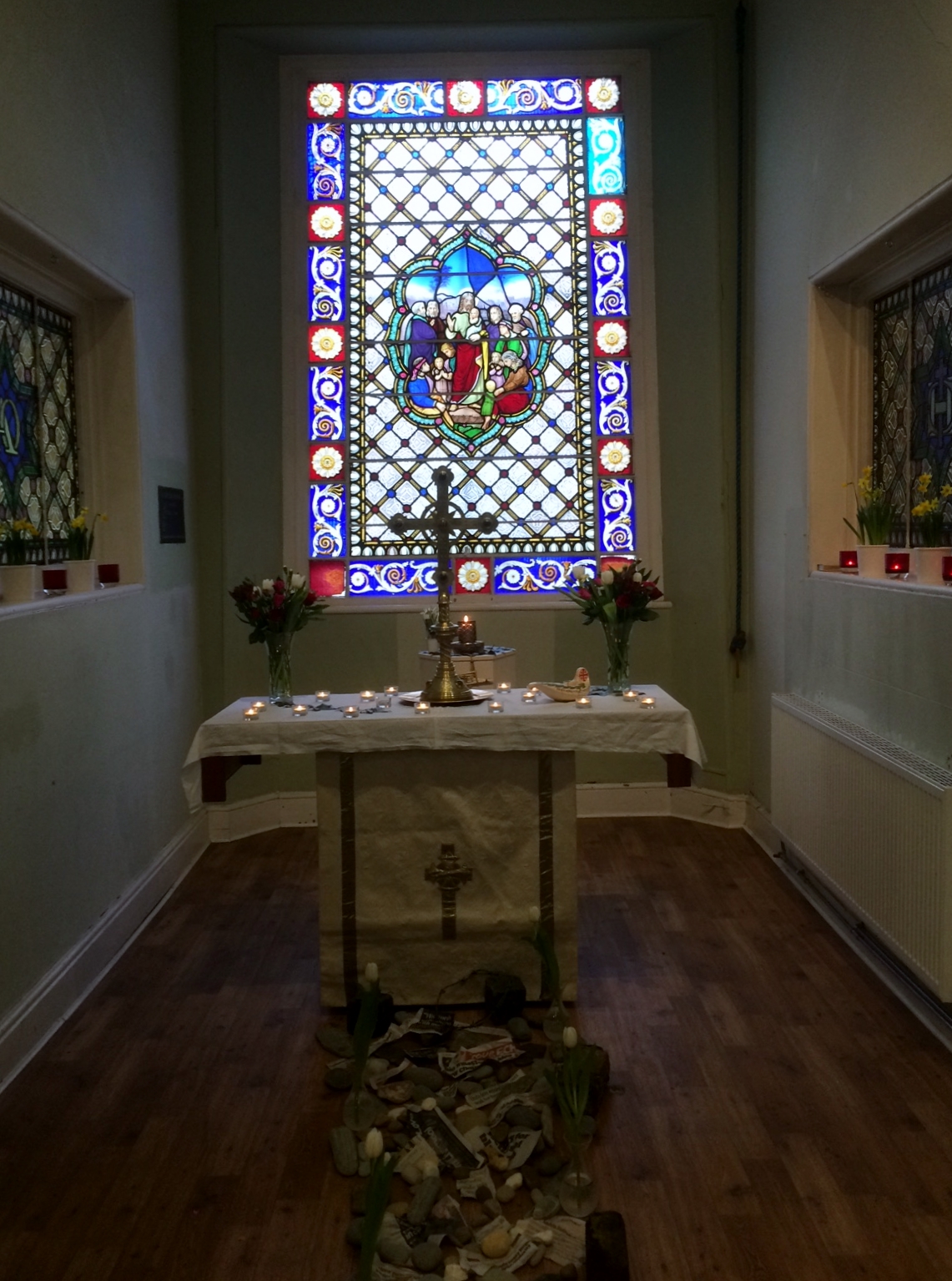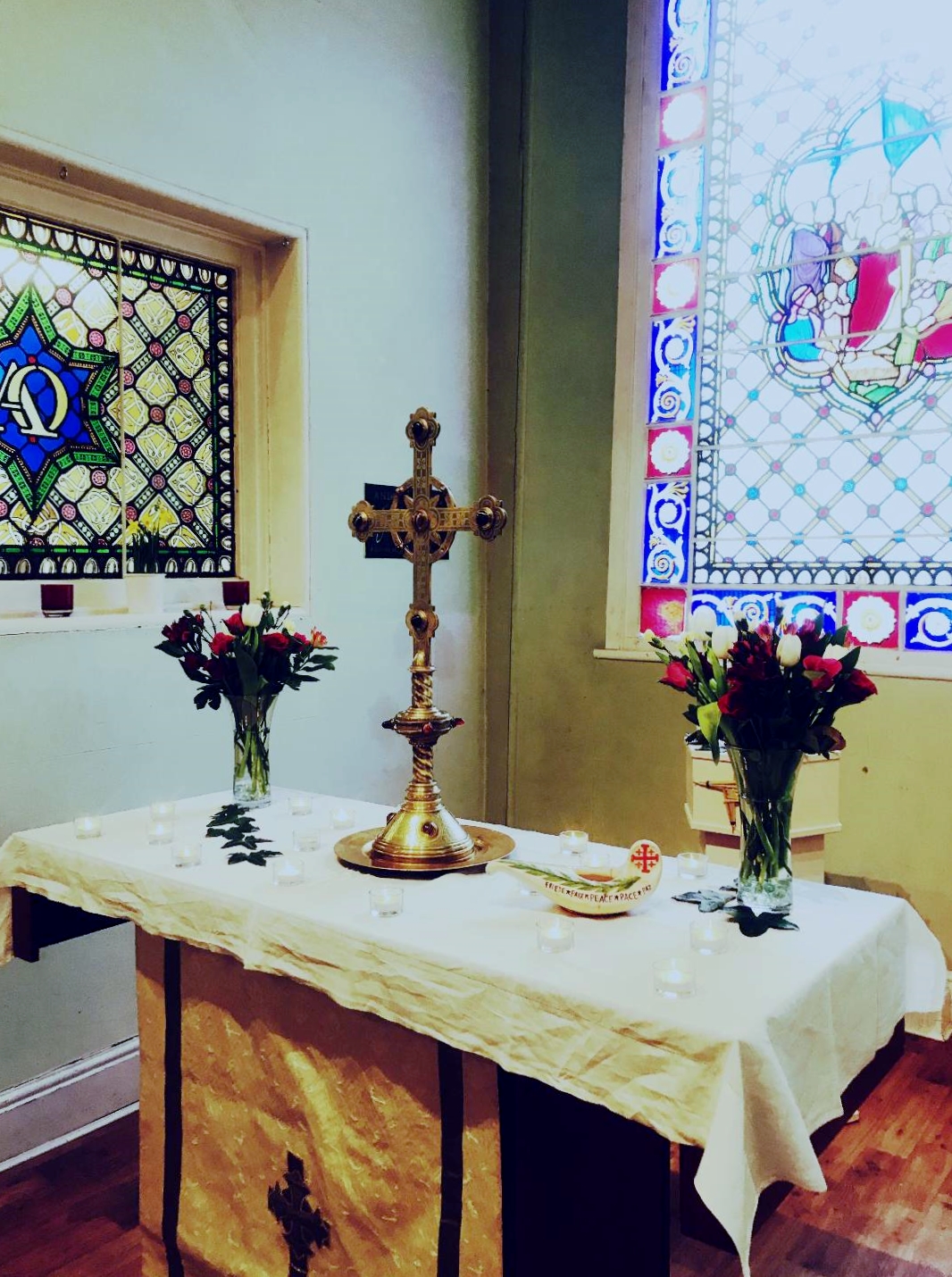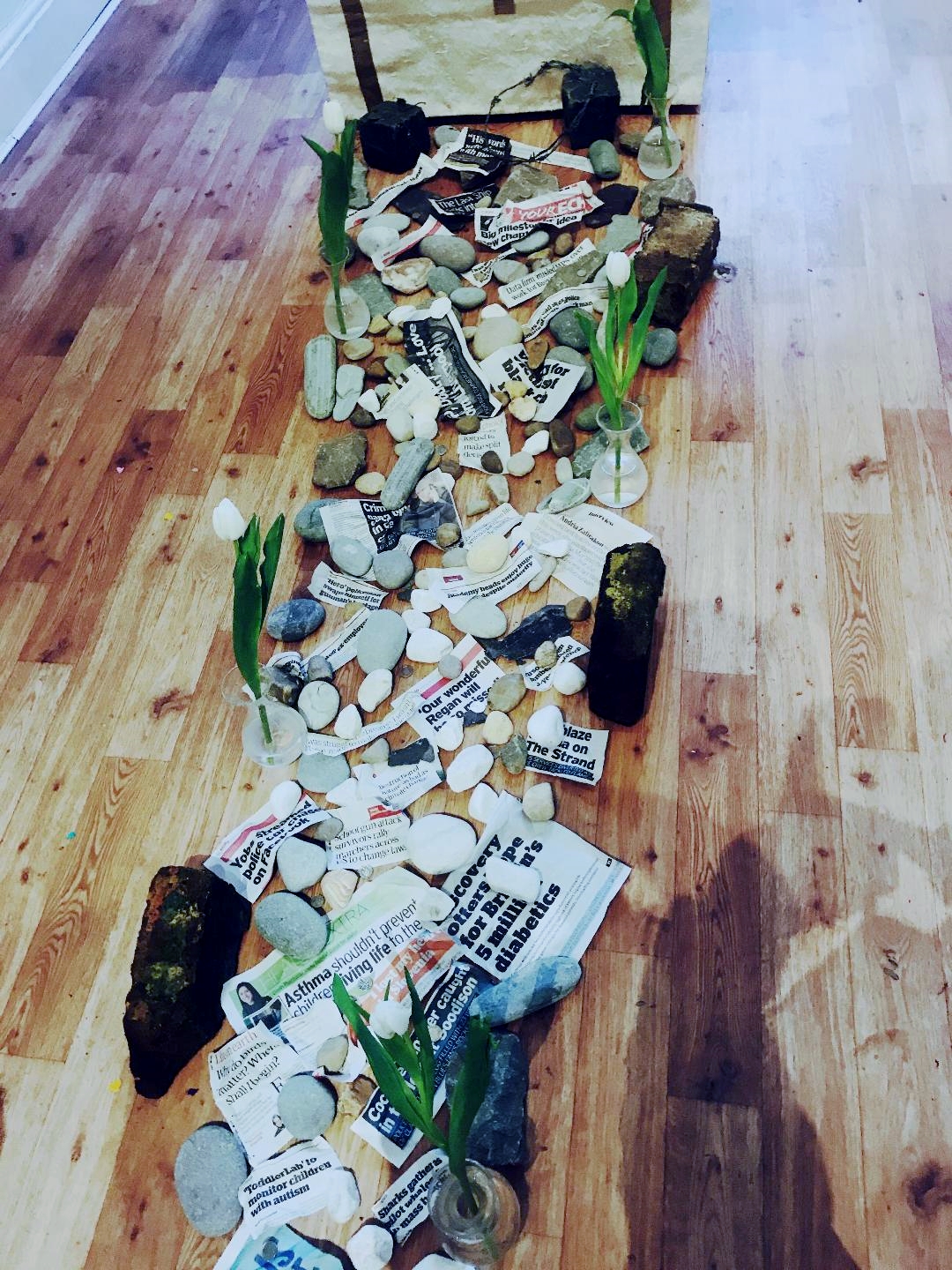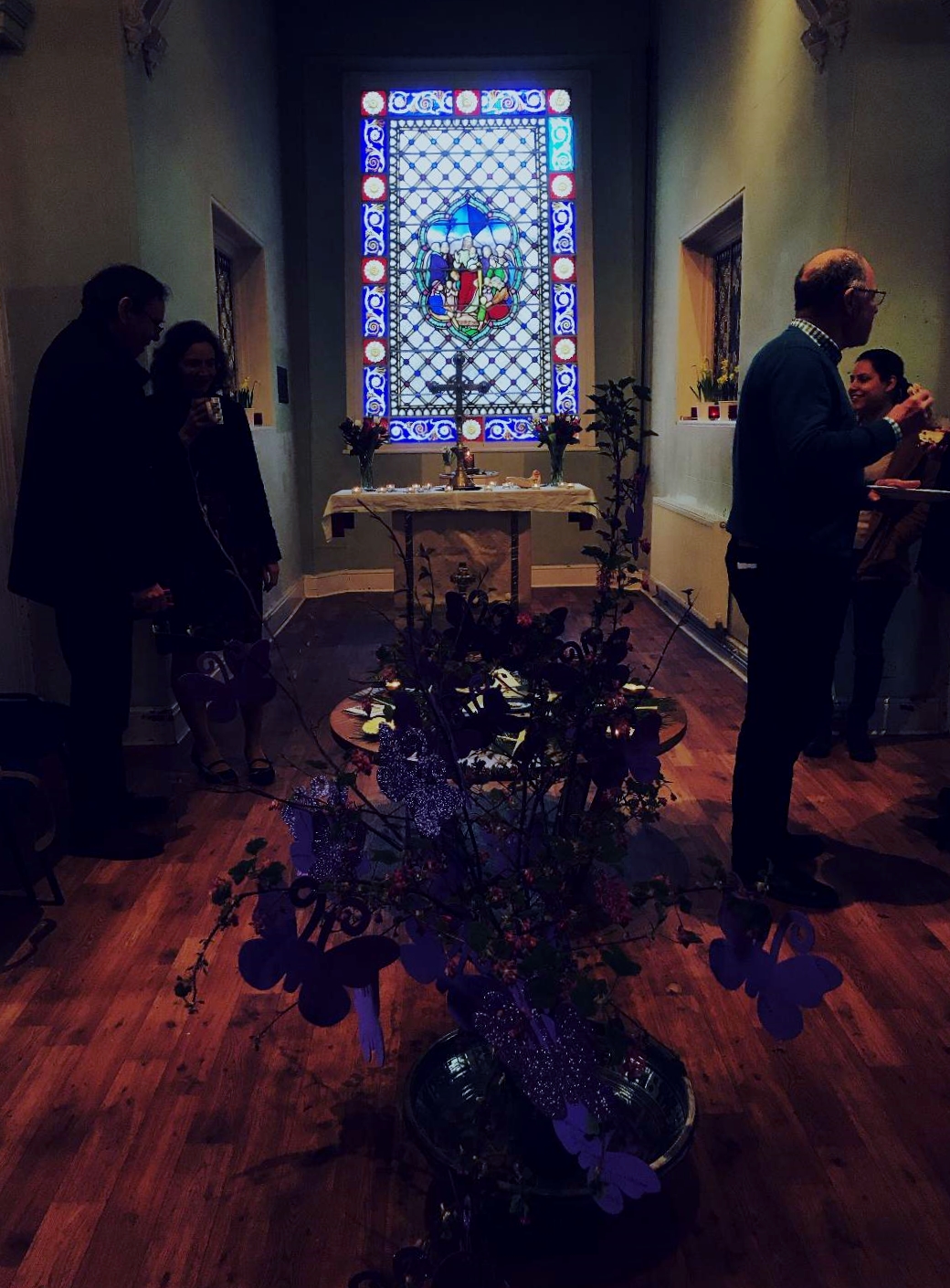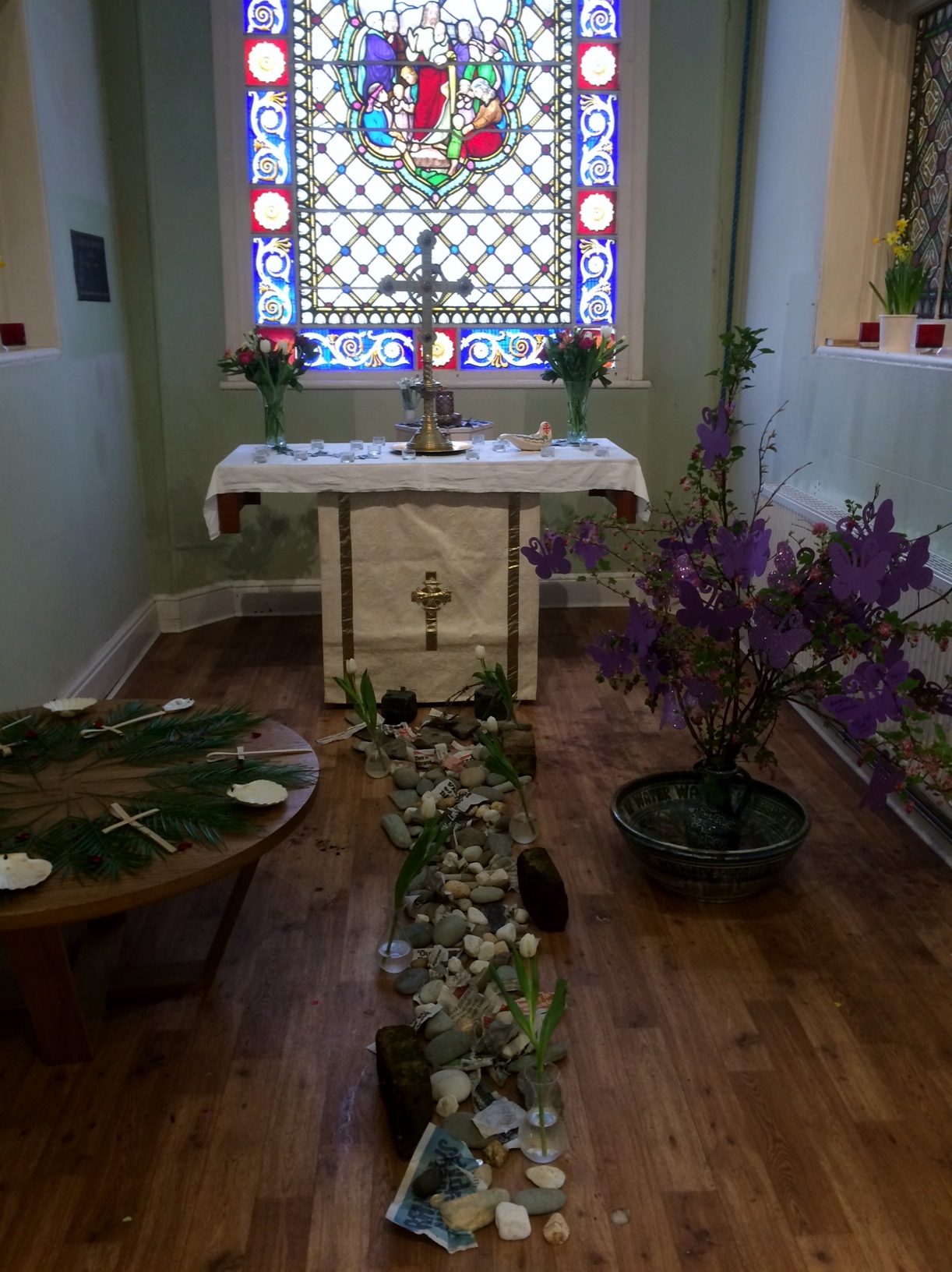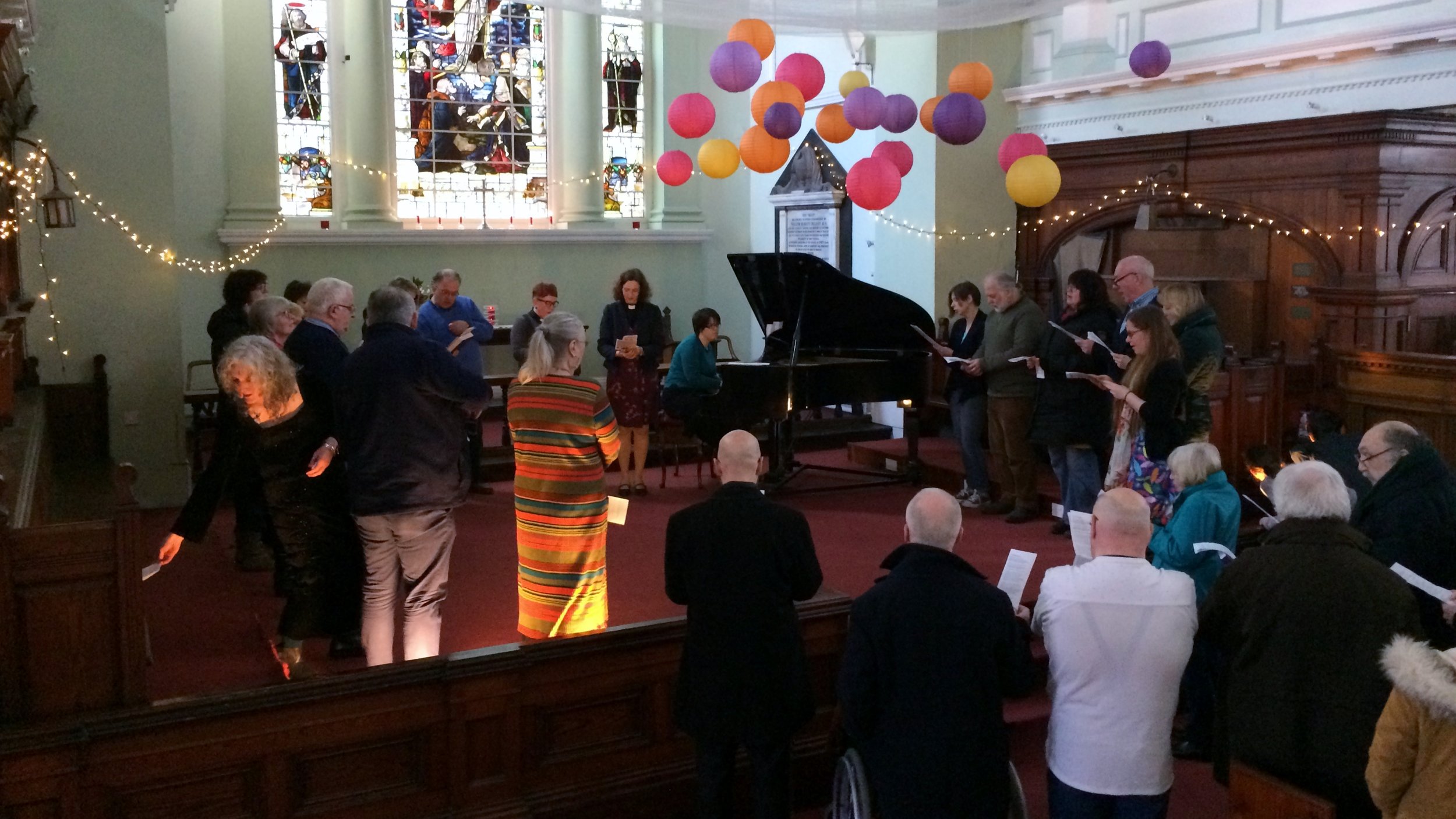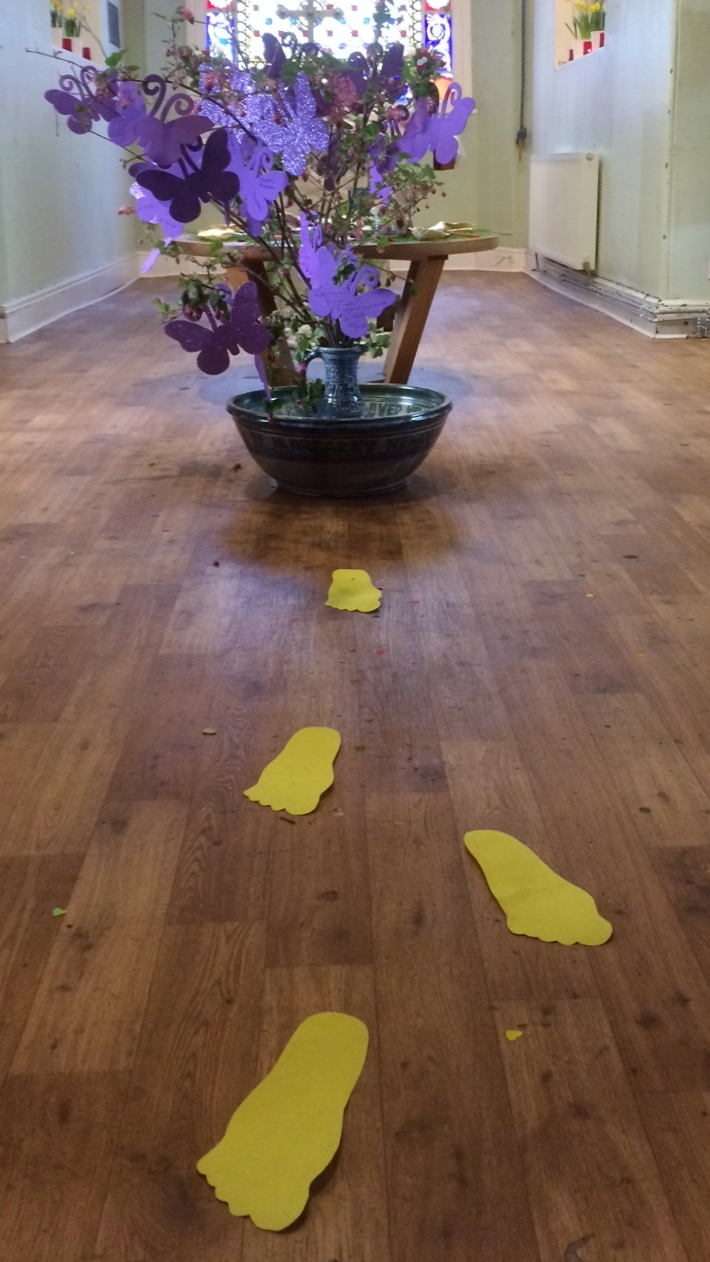Location, location, location - Where can we find Jesus?
Christ's appearance to Mary Magdalene after the Resurrection by Alexander Ivanov, 1835
Our Rector Miranda Threlfall-Holmes' reflection on John 20:1-18:
I’m sure you’ve all heard what estate agents say are the three most important things to look for in a house. Yes, that’s right, location, location, location! And that estate agent's mantra is Mary’s refrain throughout today’s gospel reading, isn’t it? Where is Jesus’s body located?
She says to the two disciples:
‘They’ve taken him away, and I don’t know where they have laid him’
She says again, in almost exactly the same words, to the angels at the tomb:
‘They’ve taken him away and I don’t know where they have laid him’.
And to the one she thinks is a gardener:
‘If you’ve taken him away, tell me, where have you laid him?’
Location, location, location. It’s all Mary can say, all she can think. She needs a place where she can know that she is near Jesus. To stand at his graveside, maybe to hold his dead hand and wash and wrap his dead body. She can’t do anything to make things better, but she feels, deep, deep down, that she just needs to be near him.
Friday and Saturday had been like a bad dream. The disciples were in shock. It had all happened so quickly – in the night, the arrest; before dawn, the trial before the priests; early in the morning, the trip to Pilate; the crucifixion; by mid afternoon Jesus was dead. And no time to give him a decent burial or make any of the usual arrangements – they just had time to wrap up the body and get him into an unused tomb nearby before nightfall. They couldn’t do anything once the Sabbath started. So they’d had to wait, all that night, and all the next long day.
Mary couldn’t sleep. She had to get to the grave, to be with Jesus - what was left of him. She needed to be near him again. It must have been very early in the morning, still dark. Mary listened carefully. A scuffle of rats or mice in the straw in the corner was the only sound. No birds, no traders stirring yet. It was very early, then. But she couldn’t wait. Should she wake the others? Their breathing was soft and regular. No, let them sleep. They all needed it after the time they’d had lately. She got up quietly. There was a chill in the night air. Mary groped about in the darkness for her cloak. Stepping over the sleeping bodies on the floor, she left her breath as one of them turned over - but didn’t wake up. She let herself out of the house. The street was dark and deserted. The latch closing behind her seemed to clang too loudly. But no-one stirred. The dark houses loomed up on each side of her in the moonlight as she hurried down the dusty street, out of the town. Towards the tomb.
Imagine going to the grave of a loved one, whose funeral you had attended just two short days before, and finding the grave open!
Mary was horrified. She stopped, as soon as she saw the entrance to the tomb gaping dark and wide in the shadows. Fear swept over her. Who had done this? The Romans? The priests? Robbers? Suddenly the shadows of the trees and rocks seemed full of sinister deeper shadows. Rustling branches seemed to hide spies. Mary turned and fled.
She ran to two of the other disciples.
‘They have taken the Lord out of the tomb, and we do not know where they have laid him!'
They come running. Running all the way to the tomb. In fact, they race each other.
Someone has commented on this passage that it shows what we do when we can’t find Jesus – we run around a lot.
It is as Mary says - Jesus’s body is gone. But that’s odd. The wrappings he was in are still there. It seems unlikely the Romans or the Temple guards would have bothered to unwrap the body and neatly fold the grave-clothes – or if they had, they’d have stolen them, shared them out between themselves with dice as they did with the clothes Jesus was wearing when they crucified him! Dimly, they remember Jesus saying that he would rise three days after his death. But then, where is he? Peter and John are puzzled, bemused. They can feel hope rising in them – but they are still numb with the shock of the last two days. There is nothing for them to do here. Maybe they can work this out back in the town. They go back home.
But Mary can’t move. She feels doubly bereaved – Jesus is dead, and she hasn’t even got a body to tend, a grave to visit. There’s no place to remember him, no location that she can go to and think of and feel close to him at. This empty tomb will have to do. This is where he should be lying. It was here he was laid on Friday. For the first time, Mary looks into the tomb. She blinks. Two angels are sitting where Jesus should be lying. Mary is so obsessed with the location of Jesus’s body that the important thing she notices isn’t that there are angels at all, but where they are in relation to where Jesus’s should have been - one where his head should be, one where his feet would have been. One of them speaks. ‘Woman, why are you crying?’
All she can say is all she is thinking:
‘They have taken away my Lord, and I do not know where they have laid him.'
Then she turns away – she can’t cope with angels now. It’s not angels she wants, it's Jesus. Where is he?
Now here’s someone else, a man. Must be the gardener. He’s asking her why she’s crying too. Has he moved Jesus’ body? A spark of hope that she might be nearer to finding him dries her tears enough for her to be able to speak.
‘Sir, If you have carried him away, tell me where you have laid him and I will take him away’.
He says,
‘Mary!’
And suddenly, through her tears, she sees that its Jesus! Alive! She falls onto him, hugging him, stroking - but he slips from her grasp. When she reaches out again, he holds up her hand, stopping her. He says:
‘Don’t cling to me. Go and tell the others. I am ascending to God’.
She looks at him. Her hands itch to reach out to him again, to touch him, to know again that it is true. Leaving him there is perhaps the hardest thing she’s ever done. But she does it. Running as fast as she can, she retraces her steps for the third time that morning - away from the tomb, back to the houses, back to the other disciples.
I must say, this isn’t how I’d choose to end this story if I was writing it. I think I’d like to put in a long, soft-focus hug here, maybe slowly moving to a close up of Jesus and Mary’s ecstatic faces. Then they could go together to get the disciples, hand in hand. Or maybe Jesus would tell her to go and get them, and they’d all be happily reunited there on the hill, outside the tomb, and the picture would slowly fade on them all singing something catchy, there on the hilltop, like in that old Coke advert.
So what’s going on? Why, after Mary has spent all morning wanting to find Jesus’s body, and then when she sees him wants to hug him, naturally - why does he tell her not to cling to him, and then send her away?
It is a happy ending, but its not the happy ending Mary thinks at first its going to be, not the kind I’d have had in my schmaltzy Hollywood ending to the story. The message of Easter isn’t that Jesus is alive again. It’s not that everything is back to normal, that the crucifixion has been reversed. Jesus isn’t alive again in the same way as before. As someone put it, Easter isn’t about a resuscitation, but a resurrection.
It’s not the same old Jesus, back again, but the risen Christ who is ascending to the Godhead. Easter doesn’t reverse Good Friday. Easter takes us beyond Good Friday, through Good Friday, to a new life, a new way of doing things.
‘They have taken my Lord away, and I don’t know where they have laid him.’
God doesn’t stay still, waiting for us to find him and lay flowers at the place.
All our expectations of Jesus are ways of trying to pin him down, to locate him, to get him back in that tomb – in the place where we expected to find him. But Jesus just won't stay there. We like to know where we can find Jesus. Some of us expect to find him in church. In time-hallowed ways of doing things. Or in the bible. Or in our priests and ministers. Or in our family and friends. Or even in our enemies.
But Jesus just won’t stay put in that tomb. He won’t be walled up in a church, or pressed in a book. We can’t pin him to the pages of the bible like a butterfly in a Victorian collection, or trap him in statues and pictures, or the words of our favourite hymns. He won’t be confined to the people we expect to find him in.
Following Jesus is a continual process of losing him the moment we have him captured, only to discover him again, where we least expected to see him, in an even more unmanageable form.
Change is the way of the world. Time moves on, and people and fashions and all sorts of things that we love die and alter. We all find change stressful, and although change can be exciting, some changes can be shattering. But change is a fact of life, and always has been. Things aren’t going to stop changing, however much we might want them to. Time moves on, the world changes and we can often fear that we are getting left behind. But this story of the resurrection assures us that God is always a step ahead of us, leading us into the change, ready to meet with us there.
God is always one step ahead. Like Mary on that first Easter morning, we don’t know what the future holds for us, or for the world, or for the church. But we do know the one important thing, that the risen Jesus is on the loose.
Location, location, location might well be the three most important things to look for in a house. But this Easter story makes it quite clear that location is not the most important thing to look for in a God. Tempting as it might sometimes be to want a God who stays where he’s put, such a God wouldn’t be much use. He’d get left behind, or go out of fashion, or find that a bypass had been built round the place he was laid so that no-one visited him anymore. Fortunately, our God isn’t stuck conveniently but fatally in that tomb. He has risen. However infuriating it might be when we can’t find him, ultimately it is only because he isn’t confined to one place that we can be sure we will see him again.
The really good news is that we don’t need to worry about trying to find God. God will find us.
Photos from our Easter Day morning service:
